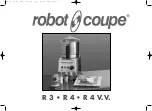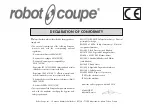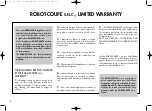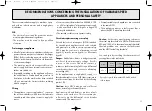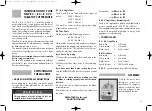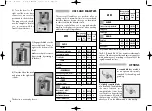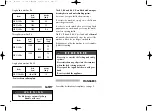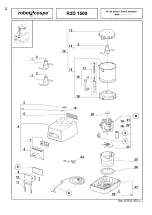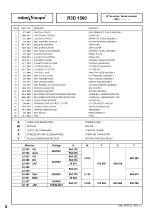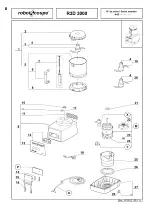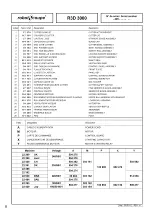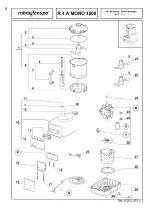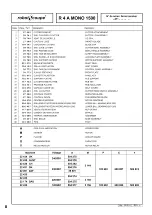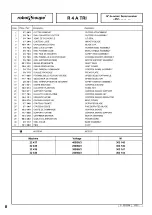
15
Eng
RECOMMENDATIONS CONCERNING THE INSTALLATION OF VARIABLE-SPEED
APPLIANCES AND PERSONAL SAFETY
These recommendations apply to machines equip-
ped with an induction motor and a single-phase
wobbulator.
NB:
- The electrical circuit and the protective devices
must comply with national regulations.
- The machine must be wired in by a qualified
electrician
Protecting your appliance
• Like all electronic devices, wobbulators include com-
ponents that are sensitive to electrostatic discharges
(ESDs). Before conducting any work on these wob-
bulators, technicians must therefore rid themselves
of electrostatic charges.
• The machine must be disconnected from the
mains supply before any internal connection ope-
rations are carried out.
• Repeatedly switching on the appliance will cause
the wobbulator to overload and may result in its
destruction. After the machine has been switched
off, you must wait for 3 minutes before switching
it back on again.
Wiring
• The appliance requires single-phase* current as
far as the wobbulator, which turns the latter into
variable-speed three-phase current to supply the
motor.
• You must connect the machine to a 200-240 V / 50
or 60 Hz single-phase* alternating current supply
with an earthed socket. A higher voltage will
destroy the wobbulator.
• The earthed socket ensures operator safety.
Circuit interrupters ensuring user safety
Ground fault circuit interrupters (GFCIs) intended
for variable-speed appliances need to be selected
with great care in order to ensure operator safety.
GFCIs may be sensitive to alternating current
(type AC), impulse current (type A) or all currents
(type B).
Danger:
Wobbulators feature a bridge-connected
rectifier of the mains supply voltage. For this
reason, in the event of an earth contact, a
continuous fault current may fail to trip a differential
circuit breaker that is only sensitive to alternating
current (type AC).
As the appliance has a single-phase* supply, it is
therefore advisable to use a GFCI that is sensitive to
impulse current (type A), identified by the following
symbol :
.
Caution:
these GFCIs may go under different
names, according to the manufacturer.
Appliances with wobbulators produce a fault
current on the earth wire. This current may be
sufficient to trip the differential circuit breaker
unnecessarily. This may occur if :
• Several variable-speed appliances are connected
to the same GFCI.
• The appliance produces a fault current that is
above the GFCI’s actual trip threshold.
Caution:
As there are manufacturing tolerances,
the actual trip threshold of a GFCI will be between
50% and 100% of its theoretical nominal threshold.
Should a problem arise, measure the fault current
and the GFCI’s actual trip threshold.
You can begin by consulting the characteristics of
your appliance in the table below :
* Except for specific three-phase 200-240 V models
sold in Japan.
Appliance
Mains
supply
Conductor
Cross-section
(mm
2
)
GFCI (Ph + N or 3 Ph)
Gauge (A)
Threshold (mA)
R 4 V.V.
200 - 240V
50 or 60 Hz
single-phase
1,5
B16
≥
30
405 547 - R3-R4 An - 07-13:R 4 ANGLAIS
2/07/13
14:16
Page 15
Summary of Contents for R 3
Page 1: ...R 3 R 4 R 4 V V 405 536 R3 R4 RDM 07 13 R 4 Couv 2 07 13 14 25 Page 1...
Page 11: ...118...
Page 12: ...119 119...
Page 13: ...120 120...
Page 14: ...121...
Page 15: ...122...
Page 16: ...123 123...
Page 17: ...124 124...
Page 18: ...125 125...
Page 19: ...126 126...
Page 20: ...127 127...
Page 21: ...129 129...
Page 22: ...130...
Page 23: ...131...
Page 24: ...132...
Page 25: ...133...

